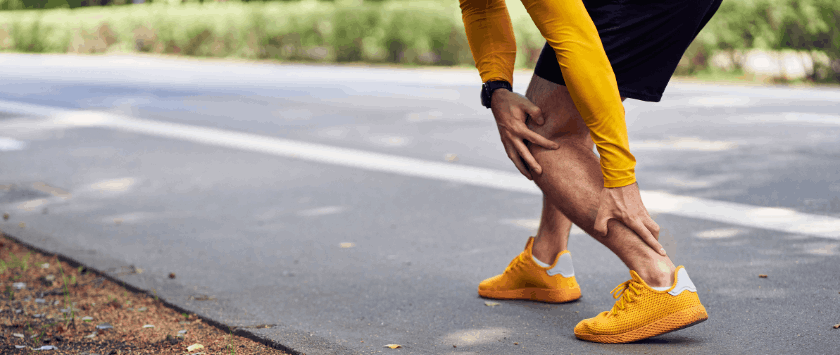
Achilles tendinopathy is one of the most frequently occurring conditions in physically active people, commonly occurring in those who participate in long-term/high-intensity training and competition. Achilles tendinopathy results due to degeneration to the fibres that make up the Achilles tendon, commonly affecting either the insertion or mid-portion of the Achilles tendon.
Symptoms can often include:
- Pain/stiffness around the Achilles tendon (Insertion at the heel or further towards the tendon).
- Pain at the beginning/end of the exercise.
- Pain/stiffness which is worse in the morning (Or after sitting for long periods).
- Thickening of the Achilles tendon.
Achilles tendinopathy often presents when the tendon is unable to adapt to the increased stress that is being placed on it.
There are multiple factors that can lead to Achilles tendinopathy including:
- Overuse/increased strain on the tendon (Common in runners, dancers, sports requiring jumping).
- Training/exercise errors (Poor running technique, inefficient movement patterns, inadequate warm-up).
- Internal factors (Poor lower limb strength, reduced range of motion, previous injury).
- Change/sudden increase in activities (Rapid increase in training intensity/volume).
- Inappropriate footwear (Certain footwear can increase the strain on the Achilles).
- Environment (Lots of hill running).
Diagnosis/Assessment:
- An extensive subjective history will be taken to allow appropriate diagnosis, including the duration and type of symptoms, along with any potential mechanism of injury. Medical history is relevant, as in rare cases certain medical conditions can cause Achilles problems.
- Visual observation provides important information which includes;
- Swelling/thickening of the Achilles tendon
- Any localized redness
- Asymmetry between calf muscles/foot posture
Key Assessments are generally used to identify:
- Reduced range of motion/Quality of movement
- Assessment to rule out rupture of the Achilles tendon
- Reduced lower limb strength/asymmetries
- Identifying inefficient gait/movement patterns
- Physical examination including structural changes/thickening of the Achilles tendon
- Footwear assessment
- Functional assessments are often implemented to measure physical performance which helps guide rehabilitation.
- Self-reported outcome measures are sometimes used to help more accurately guide treatment and recovery.
- Imaging is often not required for diagnosis, however, can be useful in identifying the structures involved, or providing a differential diagnosis.
Management:
- Management of Achilles tendinopathy in most cases is effectively treated nonoperatively, with good evidence for the use of physical therapy (strengthening), activity modification, gait/movement re-training, and footwear modification treatment strategies. As Achilles tendinopathy can reoccur, management includes evidence-based prevention strategies to reduce the risk of reinjury.
Return to play/Prognosis:
- Early identification/treatment is key to a good prognosis, as Achilles tendinopathy can be challenging to treat. With appropriate treatment, symptoms of Achilles tendinopathy can resolve in 3-6 months. However, chronic cases of Achilles tendinopathy may take anywhere from 4-9+ months to fully resolve. Recovery is variable in each individual, however appropriate diagnosis and treatment is imperative to help improve recovery.
 Helping the Central Coast Feel Well, Move Well and Perform Well!
Helping the Central Coast Feel Well, Move Well and Perform Well!